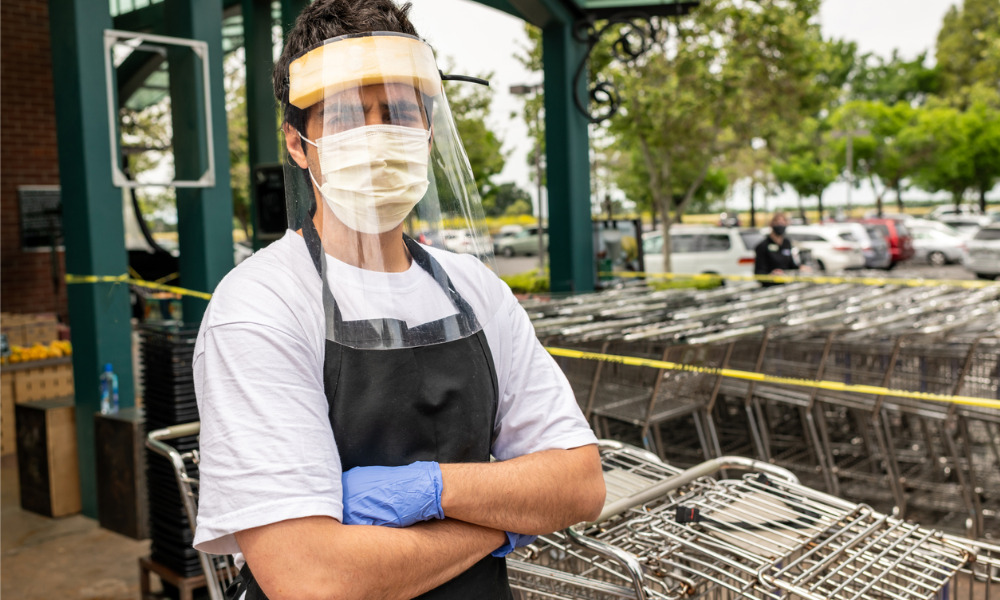‘It’s clear that many provinces are leaving money on the table during a time of unprecedented crisis’

Canadian provincial governments are not spending enough to support essential workers amid the COVID-19 pandemic, according to the Canadian Centre for Policy Alternatives (CCPA).
In its report – titled Picking up the Tab: A complete accounting of federal and provincial COVID-19 measures in 2020 – the non-profit group noted that overall, Canada allocated $374 billion from federal and provincial governments for direct COVID-19 emergency spending.
However, $343 billion (92 per cent) of that budget came from the federal government. The 10 provinces chipped in only $31 billion (eight per cent) combined.
“It’s only fitting that the federal government took the lead during this crisis given historically low interest rates and a manageable debt-to-GDP ratio,” said David Macdonald, said study author and CCPA senior economist. “That being said, it’s clear that many provinces are leaving money on the table during a time of unprecedented crisis. There is fiscal room for many provinces to step up and do more.”
According to the report, amid the crisis in long-term care (LTC), Newfoundland and Labrador, Prince Edward Island, New Brunswick, Manitoba, Saskatchewan and Alberta don’t have sufficient plans in place to access the full amount of federal LTC funds. Overall, just 12 per cent of COVID-19 health spending is coming from the provinces.
Also, Nova Scotia, New Brunswick, Manitoba, Saskatchewan, Alberta and British Columbia didn’t access the full federal amount available for the low wage essential worker top-up. Of the $348 million available to Alberta in particular, the province only accessed $12 million leaving $335.8 million unspent.
“It’s incredibly problematic that several provinces do not yet have plans to spend federal money in health care, long-term care and housing at a time when it’s so urgently needed,” said Macdonald. “When it comes to government spending, this has largely been a federal show. There is room to do more, particularly at the provincial level, to mitigate the pandemic’s impacts.”
Previously, Alberta Health Services and Covenant Health piloted the use of temporary vaccine clinics in emergency departments in hospitals across Alberta. This is to give eligible emergency department staff and physicians more chances to receive COVID-19 vaccine, according to the government.
Also, Manitoba completed processing more than 20,000 new claims worth $19 million as part of the second intake of the Caregiver Wage Support Program, and British Columbia announced it is investing $8.4 million to train people to become healthcare assistants caring for seniors in the province.
Supports for individuals, businesses
The study also found that the provinces covered only four per cent of the total supports allocated for individuals, and only six per cent for those given to businesses. The rest came from the feds. Newfoundland and Labrador, Prince Edward Island, Quebec, Ontario, Saskatchewan and Alberta are “sitting on billions of unallocated COVID-19 contingency funds built into their budgets”.
Also, Prince Edward Island, Nova Scotia, New Brunswick, Manitoba and Saskatchewan have not met the 50-50 cost-sharing stipulation attached to municipal supports through the Safe Restart agreements.
“Post-pandemic, all levels of government must work together to rebuild better—to be prepared for future crises, to tackle the inequities that COVID-19 has exposed, and to improve public services,” said Macdonald.
Consultation
On Jan. 26, the federal government had a virtual meeting with healthcare organizations and associations from across Canada to discuss ideas about how Budget 2021 can continue to support the health and safety of Canadians through the pandemic.
“Our healthcare workers have been working tirelessly throughout this pandemic to keep Canadians safe. Today, we met with these healthcare heroes to hear how we can keep working together so that Canadians are healthy and safe through this second wave and beyond,” said Patty Hajdu, minister of health. “In Budget 2021, we plan to build on our partnership with experts and public health professionals, ensuring that you, your family, and your community are safe.”
All Canadians are also invited to share their ideas through an online questionnaire at LetsTalkBudget2021.ca, which will be available until Feb. 19, 2021.





